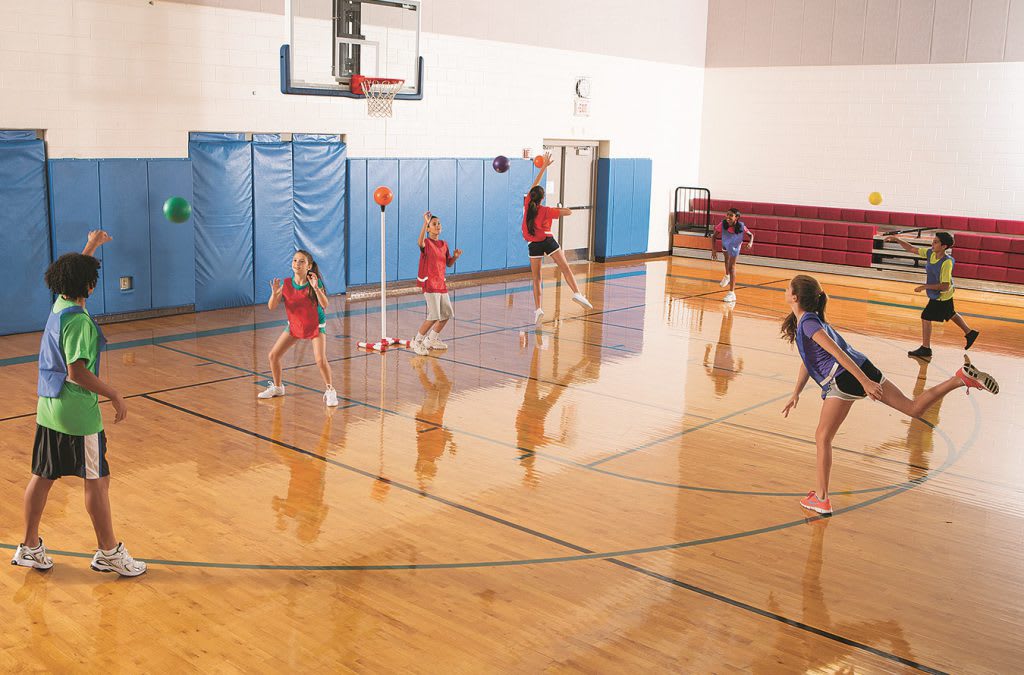The Future of Physical Education in Schools: Challenges and Opportunities
by David Pieringer

The Future of Physical Education in Schools: Challenges and Opportunities
Introduction
Physical education (PE) has long been a staple of school curricula, promoting physical fitness, teamwork, and healthy lifestyles among students. However, the landscape of physical education is evolving, influenced by technological advancements, changing societal values, and a growing understanding of mental health. This article explores the future of physical education in schools, examining its potential transformations and the critical role it plays in combating bullying and addressing related mental stress.
The Evolving Landscape of Physical Education
The traditional model of physical education, focused primarily on physical fitness and sports skills, is undergoing significant changes. These transformations are driven by various factors, including technological innovation, increased awareness of mental health, and a broader understanding of wellness.
Technological Integration
1. Wearable Technology and Fitness Apps:
o The integration of wearable technology, such as fitness trackers and smartwatches, is revolutionizing PE classes. These devices can monitor students' physical activity, heart rate, and other health metrics, providing personalized feedback and encouraging self-improvement.
2. Virtual and Augmented Reality:
o Virtual and augmented reality (VR and AR) are being introduced into PE to create immersive and engaging experiences. These technologies can simulate different environments and activities, making physical exercise more enjoyable and accessible.
3. Online PE Programs:
o With the rise of online education, PE programs are also moving to digital platforms. Online PE can include video tutorials, interactive fitness challenges, and virtual coaching, allowing students to participate in physical activities from home.
Holistic Approach to Wellness
1. Mental Health Integration:
o Modern PE curricula are increasingly incorporating mental health education. Activities such as mindfulness, yoga, and stress management techniques are being included to promote overall well-being.
2. Inclusive and Adaptive PE:
o There is a growing emphasis on inclusivity in PE, ensuring that students of all abilities can participate and benefit. Adaptive PE programs are designed to accommodate students with disabilities, promoting equity and accessibility.
3. Lifelong Fitness Education:
o The focus is shifting from short-term fitness goals to promoting lifelong healthy habits. PE classes are teaching students about nutrition, personal fitness planning, and the importance of regular physical activity throughout their lives.
Addressing Bullying in Physical Education
While physical education has numerous benefits, it can also be a setting where bullying occurs, leading to significant mental stress for students. Understanding the causes and implementing strategies to combat bullying in PE is crucial for creating a safe and supportive environment.
Causes of Bullying in PE
1. Performance Pressure:
o Students who struggle with physical activities or perform below their peers may become targets of bullying. The competitive nature of some PE activities can exacerbate this issue.
2. Body Image Issues:
o PE classes can highlight differences in body types and physical abilities, leading to body shaming and bullying. Students who feel self-conscious about their bodies may be particularly vulnerable.
3. Social Hierarchies:
o Group activities and team sports can reinforce social hierarchies and cliques. Students who are not part of the dominant social groups may be excluded or bullied.
Mental Stress from Bullying
Bullying in PE can lead to significant mental health issues, including:
1. Anxiety and Depression:
o Victims of bullying often experience increased levels of anxiety and depression. The fear of participating in PE classes can exacerbate these feelings, leading to avoidance and further isolation.
2. Low Self-Esteem:
o Bullying can severely impact a student's self-esteem and self-worth. Negative comments about physical abilities or appearance can lead to long-term issues with body image and confidence.
3. Academic Impact:
o The mental stress from bullying can spill over into other areas of a student's life, including academic performance. Students who are bullied may struggle to concentrate, leading to declining grades and school avoidance.
Strategies to Combat Bullying in PE
Creating a safe and inclusive PE environment requires proactive strategies to prevent bullying and support affected students.
1. Promoting Inclusivity:
o PE programs should emphasize inclusivity and respect for all students. Activities should be designed to accommodate various skill levels and abilities, ensuring that everyone can participate and feel valued.
2. Bullying Prevention Programs:
o Schools should implement comprehensive bullying prevention programs that include education about the harmful effects of bullying, strategies for intervention, and support systems for victims.
3. Training for PE Teachers:
o PE teachers should receive training on recognizing and addressing bullying. They should be equipped with strategies to create a positive classroom environment and to intervene effectively when bullying occurs.
4. Encouraging Peer Support:
o Fostering a culture of peer support can help reduce bullying. Encouraging students to look out for each other and to stand up against bullying behavior can create a more supportive and inclusive environment.
5. Anonymous Reporting Systems:
o Providing anonymous reporting systems can help students feel safe in reporting bullying incidents. These systems ensure that students can seek help without fear of retaliation.
The Future of Physical Education: Opportunities and Challenges
As physical education continues to evolve, it faces both opportunities and challenges in adapting to the needs of modern students.
Opportunities
1. Enhanced Engagement:
o The use of technology and innovative teaching methods can enhance student engagement in PE. By making physical activity fun and interactive, schools can encourage lifelong fitness habits.
2. Holistic Health Education:
o Integrating mental health and wellness education into PE can provide students with a more comprehensive understanding of health. This holistic approach can improve both physical and mental well-being.
3. Inclusivity and Accessibility:
o Advancements in adaptive PE programs can ensure that all students, regardless of ability, can benefit from physical education. This promotes equity and fosters a sense of belonging.
Challenges
1. Resource Limitations:
o Implementing new technologies and inclusive programs can be resource-intensive. Schools may face budget constraints and lack of access to necessary equipment and training.
2. Balancing Academic and PE Priorities:
o With increasing academic pressures, schools may struggle to allocate sufficient time and resources to PE. Finding a balance between academic and physical education is crucial for holistic student development.
3. Addressing Mental Health Needs:
o While integrating mental health education into PE is beneficial, it requires careful planning and resources. Schools need to ensure that they have the expertise and support systems in place to address students' mental health needs effectively.
Conclusion
The future of physical education in schools is poised for significant transformation, driven by technological advancements, a holistic approach to wellness, and a focus on inclusivity. While these changes present exciting opportunities, they also come with challenges that schools must navigate to ensure that all students can benefit from PE. Addressing bullying and the associated mental stress is a critical component of this evolution. By fostering a supportive and inclusive environment, schools can help students develop not only physical fitness but also mental resilience and overall well-being. As we look to the future, it is essential to prioritize the comprehensive health of students, ensuring that physical education remains a vital and enriching part of the educational experience.
About the Creator
David Pieringer
Welcome to my page! I'm a dedicated writer and student with a passion for both education and sports. Balancing my love for learning with my athletic pursuits, I strive to excel in everything I do.
Enjoyed the story? Support the Creator.
Subscribe for free to receive all their stories in your feed. You could also pledge your support or give them a one-off tip, letting them know you appreciate their work.






Comments
There are no comments for this story
Be the first to respond and start the conversation.